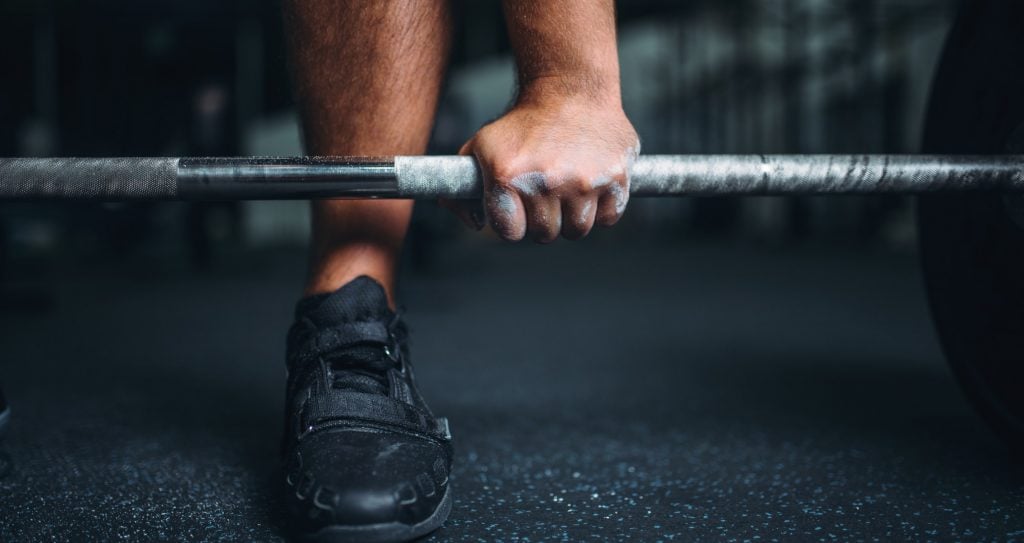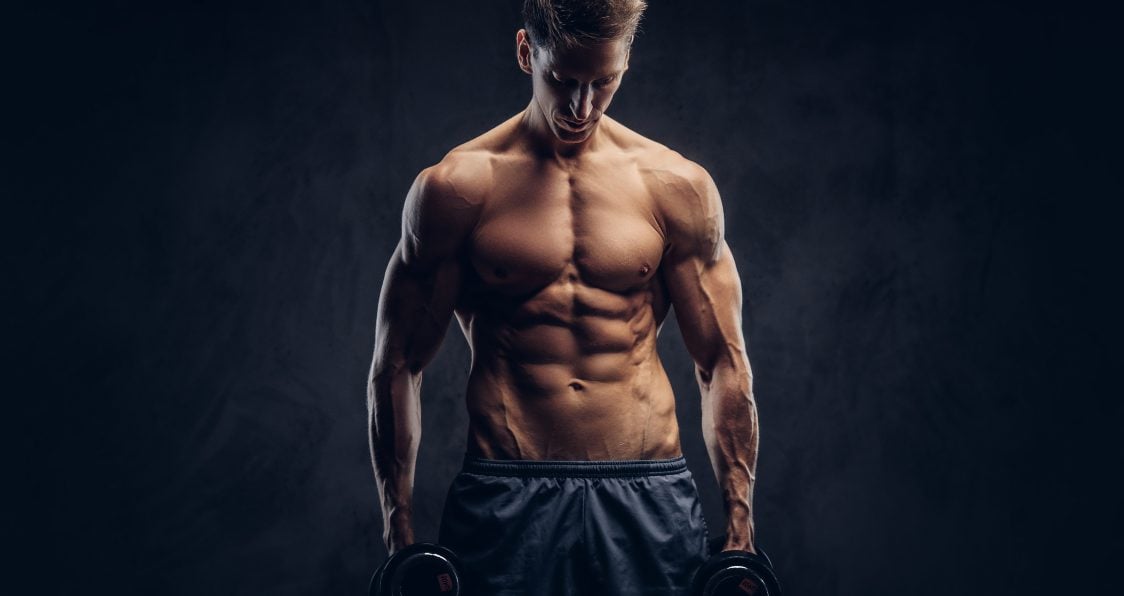Boost confidence and big gains with the big 3 powerlifting exercises.
You walk around the gym and everyone wants to know three things. How much can you squat? What’s your bench? What’s your max deadlift? If you don’t have that confident answer, you can feel slightly inadequate to other lifters around you. These exercises are great indicators of your strength and there is a reason that powerlifters do them. Whether you are training to be a powerlifter, or just simply looking to put up big numbers, these best powerlifting big three exercises are crucial to know how to do.
The strength that comes from these three power lifts can work to benefit all other exercises you do. Any heavy resistance training, like powerlifting, works to strengthen your skeleton to help reduce the risk of injury and give you a solid and stable frame. Because these exercises are compound movements, they work two or more body parts and impact every aspect of your lifts. With this, you can maximize muscle growth and ensure those gains never stop growing with a strong exercise.
Powerlifting works to greatly influence and positively impact your body in more ways than one. Each exercise will improve strength in each respective focus area. While the legs, upper body, and back are the primary groups powerlifting targets, every skeletal muscle benefits from a good routine. Since it is an intense form of resistance training, powerlifting can aid in fat loss as it burns plenty of calories in the short term, but can boost your metabolism for longer-lasting effects (1). With the strength you build, there is a correlation to increased athletic performance offering more than just big muscles (2). While powerlifting seems more of a one rep and done, strength-based focused sport, the benefits of each exercise program go far beyond simply that.
Let’s break down each of these three staple best powerlifting exercises with the benefits and proper ways to perform each. The squat, bench press, and deadlift are great exercises to boost strength and give you confidence to stand tall in the gym. For those seeking to perfect their competitive exercises or simply get huge, give these three a try and work to catapult your gains to new heights from a great program for the best results.
Squat: Light Up Those Legs
Many variations exist with the squat, but we will focus on the back squat. Squats work your glutes and quads, which serve as the drivers for this exercise, similar to lunges. It also hits the hip adductors, hamstrings, calves, and core. On the descent, your quads and glutes lengthen allowing for you to lower to the ground in a controlled speed, and then fire up as you straighten to return to the starting position. Your calves keep your feet planted while your hamstrings counter what the quads do to help with stability and reduce added strain (3) for better rest to really push yourself without new injuries.
By strengthening your lower body, squats give you a solid foundation for grounded support that benefits virtually all other exercises. The benefits of improved performance and reduced risk of injury not only promote successful lifts and competitions but can keep an athlete training longer and be a positive force to their overall well-being (4).
How to: Squats begin with your feet shoulder width apart. Make sure the bar is resting on the top of your shoulder blades and not the top of your spine. Your hands should be slightly wider than shoulder-width apart. As you brace your core, maintain a neutral spine and bend at the knee, lowering to the ground. Keep your weight centered and heels on the floor. Keeping solid form, push up to the starting position and work to build that muscle from the right workout for important gains for people.
Check out our Squat Exercise Guide for video instructions.
Bench Press: Pump That Chest
Most people love to talk about this exercise and for some reason this exercise has become the ultimate test of strength. While many variations exist for this exercise as well, we will focus on the medium-grip bench press. It is great for targeting your upper and lower chest, arms, and shoulders. The regular grip will target the entire pectoral muscle and give you that bulk in the chest while enhancing grip strength, something people need for important functional movements to start enhancing everyday gains for perfect movements.
It can not only improve upper body strength, but also deliver muscular endurance and support other exercises. While widely employed for general strength and condition, it also aids in hypertrophy (5), showing great benefit in muscle growth. Its versatility and popularity match the benefits provided to be a great strength-based, power-inducing exercise for gains to truly show.
How to: Lie on the bench with your feet planted on the floor. Grab the bar with your hands a little more than shoulder-width apart. Arch your lower back slightly. While this is debated, an arched lower back can help keep the spine neutral and the back tight. Lift the bar off the rack and gently lower to your chest as you breathe in. Your forearms should be about 90 degrees from the ground as you touch your chests and with your feet planted on the ground, initiate the upward movement to return to the starting position.
Check out our Bench Press Exercise Guide for video instructions.
Deadlift: Serious Back Builder
The deadlift is an impressive exercise for it requires both explosive strength and overall power. The deadlift will target the back and spine, glutes, and legs. This exercise is of course beneficial for those who powerlift or lift big in the gym, but the everyday benefits are considerably noticeable as well, like enhanced grip strength which we all need to work to lift the weight and be great.
For powerlifters, the deadlift is one of the big three for competition, but bodybuilders will deadlift because of the benefits to muscle growth in the back and thighs (6). As an exercise to develop overall strength, the deadlift can support stability and balance as a grounded exercise that influences many others. As a source of influence for grip strength and core stability, the deadlift is really considered an all-around, whole body workout to build strength with a lift that we need to do to build our muscles.
How to: Begin with your feet shoulder-width apart. Your knees should be slightly bent and the bar just outside the legs. Hinge at the hips and as you straighten your legs and keep the bar close to your body. As the bar approaches just above the knee and your arms straighten, keep a straight back and rest on your thighs. To return to the ground, slowly lean forward from the hips and bend your knees slightly to get back to the starting position.
Check out our Deadlift Exercise Guide for video instructions.
Wrap Up
These three powerlifts are exactly what you need to start feeling confident and comfortable in the gym. For those interested in getting involved with the sport of powerlifting, these are essential for you to know and learn to see great results. With continued work, you will see muscle mass and growth that increases your strength and a positive change in your posture and balance. The squat, bench press, and deadlift are staple three lifts in a powerlifters routine and you will love the numbers you start putting up. The benefits inside and outside of the gym should be enough for you to want to incorporate these into your workout regiment and love the results.
Let us know what you think in the comments below. Also, be sure to follow Generation Iron on Facebook, Twitter, and Instagram.
*Images courtesy of Envato
Resources
- Campbell, W. W.; Crim, M. C.; Young V. R.; Evans, W. J. (1994). “Increased energy requirements and changes in body composition with resistance training in older adults”. (source)
- Wisloff, U.; Castagna, C.; Helgerud, J.; Jones, R.; Hoff, J. (2004). “Strong correlation of maximal squat strength with sprint performance and vertical jump height in elite soccer players”. (source)
- Kompf, Justin; Arandjelovic, Ognjen (2017). “The Sticking Point in the Bench Press, the Squat, and the Deadlift: Similarities and Differences, and Their Significance for Research and Practice”. (source)
- Myer, Gregory D.; Kushner, Adam M.; Brent, Jensen L.; Schoenfeld, Brad J.; Hugentobler, Jason; Lloyd, Rhodri S.; Vermeil, Al; Chu, Donald A.; Harbin, Jason; McGill, Stuart M. (2014). “The back squat. A proposed assessment of functional deficits and technical factors that limit performance”. (source)
- Kompf, Justin; Arandjelovic, Ognjen (2017). “The Sticking Point in the Bench Press, the Squat, and the Deadlift: Similarities and Differences, and Their Significance for Research and Practice”. (source)
- Kompf, Justin; Arandjelovic, Ognjen (2017). “The Sticking Point in the Bench Press, the Squat, and the Deadlift: Similarities and Differences, and Their Significance for Research and Practice”. (source)












